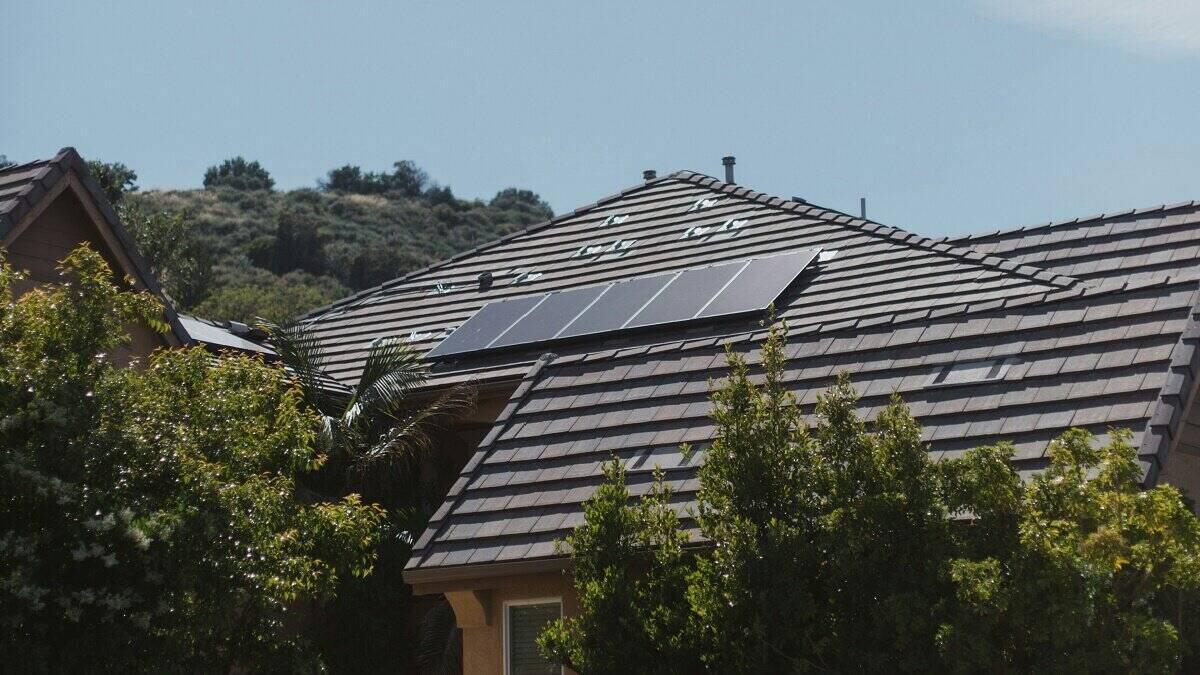While some say good things come to those who wait, others say the early bird catches the worm.
In Australia, if you wait to buy property until you’ve saved up a sizeable deposit, you can save money by not having to pay for lenders mortgage insurance (LMI). But the early birds who buy property sooner after saving the bare minimum 5% deposit have the opportunity to catch their dream home before a potential price rise.
These early birds will probably have to pay for lenders mortgage insurance, but perhaps this cost is worth it? Statistics suggest many borrowers think so, since around one-quarter of Australian housing loans are estimated to be covered by LMI according to the Reserve Bank.
Yet many Australians don't really know much about lenders mortgage insurance. Around 57% of millennials have never heard of it, while around one quarter of people incorrectly think LMI covers the borrower, according to a Mortgage Choice survey.
What is lenders mortgage insurance?
Lenders mortgage insurance (LMI for short) is an insurance policy which covers the mortgage lender against the losses they may incur in the event that the borrower can no longer pay loan repayments (an event known as a ‘default’ on the home loan).
LMI shouldn’t be confused with mortgage protection insurance, which covers borrowers for their mortgage in case of death, sickness, disability, or unemployment.
How does lenders mortgage insurance work?
If a property is under mortgage, it means the lender has the right to repossess it if the borrower defaults on their repayments. The lender then sells the property and, ideally, recoups the outstanding loan amount.
However, imagine that the value of a property has fallen substantially, to the point where it is worth less than the loan amount owed on it. The lender would likely make a loss in this case, since they would not be able to recoup the full amount they are owed by selling the property. If the lender is covered by LMI, they can make an insurance claim to make up for this loss. With this risk of loss passed on to the LMI provider, lenders are more willing to approve loans at a higher loan-to-value ratio (LVR), often up to a maximum of 95% of the property’s value or sale price (whichever is lower).
The introduction of lenders mortgage insurance to Australia in 1965 thus created more opportunities for people to get a home loan and also encouraged lenders to charge lower interest rates. The two largest providers of LMI in Australia are:
-
Genworth Financial, now called Helia Group
-
QBE
The lender decides which LMI provider to go with – the borrower has no choice in the matter.
While LMI only covers the lender, it is usually the borrower who has to pay for it. For many, paying for an insurance policy that only covers a financial institution seems like the worst form of charity. So how do you avoid it?
How much is lenders mortgage insurance?
The upfront cost of LMI premiums typically varies by the size of the loan and the LVR, as illustrated below. They can also depend on what type of borrower you are. For instance, first-time borrowers often pay a different LMI premium than existing borrowers, even at the same LVR and loan size.
LMI premiums for first home buyers
|
Estimated property value |
95% LVR LMI cost |
90% LVR LMI cost |
85% LVR LMI cost |
|
$200,000 |
$6,137 |
$2,574 |
$1,299 |
|
$400,000 |
$15,428 |
$6,552 |
$3,390 |
|
$600,000 |
$23,954 |
$13,284 |
$6,463 |
|
$800,000 |
$41,344 |
$14,400 |
$6,800 |
LMI premiums for existing borrowers
|
Estimated property value |
95% LVR LMI cost |
90% LVR LMI cost |
85% LVR LMI cost |
|
$200,000 |
$6,821 |
$2,684 |
$1,299 |
|
$400,000 |
$17,138 |
$6,944 |
$3,390 |
|
$600,000 |
$34,485 |
$10,800 |
$5,100 |
|
$800,000 |
$45,980 |
$14,400 |
$6,800 |
Source: Savings.com.au's Lenders Mortgage Insurance Calculator. Prices including GST but excluding stamp duty. Based on a loan term up to 30 years.
On top of these rates, you will typically also need to pay a stamp duty on LMI.
Is lenders mortgage insurance worth paying?
If you don’t have the time to save up a 20% deposit, it might be worth paying for LMI. In a property market where prices are rising quicker than you can save, or if there’s a rare, limited-time opportunity for you to snap up your dream house at a good price, getting in faster and paying the extra fee might work out to be a better deal.
Let's take a look at how this works:
Lenders mortgage insurance case study

Brianna has $40,000 in savings and wants to buy her first property. She’s found a house she likes that she can get for $400,000. Her $40,000 in savings would be worth a 10% deposit, putting her LVR at 90%. This would see her charged an LMI premium of around $6,944.
Brianna could save herself from having to pay this by waiting till she’d saved up a 20% deposit ($80,000). At her current wage and expenses, she’s saving $20,000 per year, so it would take her another two years until she has a total deposit of $80,000. Brianna might decide she’s happy to wait another two years to save herself from paying nearly $7,000 extra in LMI.
But what if the property’s value is increasing at a rate of 5% per annum? By the time Brianna has saved up the $80,000, the property would be worth $441,000 and Brianna’s $80,000 would be worth only 18%. Had Brianna bought the property two years’ earlier with just her 10% deposit, she could’ve paid off a significant portion of her loan and earned $41,000 in unrealised capital gains, dwarfing the cost of LMI. In cases like this, paying LMI can work out to be the more cost effective option.
How to avoid lenders mortgage insurance
Typically, lenders exempt borrowers from having to pay for lenders mortgage insurance if the deposit on the property is over 20% (80% LVR) of the property’s value or sale price. This is because lenders perceive borrowers with deposits over 20% as less likely to default on a loan. A 20% deposit is viewed as a large enough buffer to protect lenders from a fall in the value of the property so they can recover the amount owed to them if the borrower defaults.
Some circumstances may require a larger deposit though. In specific suburbs with high default rates and/or at risk of a large fall in prices (like what was seen in some of the regional mining towns when the capital infrastructure boom ended), lenders may require a bigger deposit for the borrower to be exempt from LMI, like 30 or 40%.
Other ways of avoiding lenders mortgage insurance
Borrowers can be exempt from having to pay LMI for other reasons, such as:
-
Having a guarantor: Many lenders will waive LMI on the loan (no matter how small the deposit) if the borrower is backed by a quality guarantor (such as a parent) that legally accepts responsibility for the mortgage repayments if the borrower cannot make them. Guarantors offer equity in their own home as additional security for the loan.
-
Working in a highly-regarded profession: Borrowers working in specific professions (such as doctors, accountants, lawyers etc.) that are considered to be highly paid and relatively stable can sometimes borrow up to 90% LVR without having to pay LVR.
-
Use government assistance: Government scheme’s like the First Home Guarantee, Family Home Guarantee and Regional First Home Guarantee let some home buyers secure a property with a deposit as low as 5% (or 2% for the Family Home Guarantee) without having to pay LMI. The Government essentially acts as a guarantor for up to 15% of the property value, providing extra security for the lender so they do not need to take out insurance.
-
Apply with certain lenders: If you’re in the market for a loan, you should always be shopping around to find the best deal available. Look out for lenders that offer discounts or waived LMI fees for certain borrowers. Examples include St. George reducing LMI to $1 for first home buyers or ME Bank offering a 25% reduction.
Sometimes a combination of other factors can also see LMI waived on the home loan, like a perfect credit history or requesting a modest loan amount for a property in a low-risk suburb.
Is lenders mortgage insurance added to the loan?
LMI premiums can be paid as an upfront one-off payment at settlement or can be added to the loan amount and gradually paid off in the regular mortgage repayments. This means the premium will accrue interest though, costing you more over the long term. Lenders generally prefer it to be paid upfront, but some may allow you to pay your LMI premium in monthly installments.
Is Lenders mortgage insurance tax deductible?
If you are buying an investment property, the cost of lenders mortgage insurance, including stamp duty, is tax deductible. Generally, it is claimed over a period of five years from the date of settlement. If you are buying property to live in though, this is not a business expense in the ATO’s eyes, and cannot be claimed. If you end up renting out your property down the track, you are able to claim LMI, but only for the period the property is rented out for. If you buy an owner-occupied property and begin renting it out after a year, you can only make LMI claims for four years, not five.
Can you get a refund of lenders mortgage insurance premiums?
When you refinance to a different lender or buy a new house, it’s unlikely that you’ll get this premium back. You may even have to pay for LMI again if your LVR is still above 80%.
However, in cases where the loan is terminated early, you may be eligible for a partial refund of LMI premiums. Qualifying for an LMI refund also depends on the lender’s LMI policy provider and meeting certain criteria, so it’s worth checking with your lender to see if you’re eligible.
How do I avoid LMI when refinancing?
LMI only covers your initial loan. If you refinance, the lender will make another assessment of the riskiness of this new loan, so it won’t matter if you’ve already paid LMI. If you have managed to pay off enough of your loan that the LVR of the new loan is now below 80%, you’re in the clear and won’t be charged again. If the LVR remains above 80% though, you will probably need to pay for LMI twice. The simplest way to avoid paying LMI when refinancing is to have an LVR below 80%. The quicker you pay off your mortgage, the more equity you build up. Alternatively, you could try going the other way, and decreasing the LVR by increasing the value of your property, perhaps through renovations or home improvements. You could also always try asking a member of your family to go guarantor.
Savings.com.au’s two cents
Avoiding LMI obviously saves you money by not having to pay premiums. But if property values rise in the time it takes you to come up with a 20% deposit, you’d pay more on the purchase price than you would’ve if you’d snapped up a house back when you only had a 5% deposit. You may even be shocked to discover that because prices have risen, what you thought was a 20% deposit is now only worth 15%.
That’s not to mention the intangible emotional costs that can come with having to wait longer – such as missing out on the chance to buy that dream house you’ve always loved that’s rarely on the market.
Of course with LMI, you’re paying thousands for insurance that doesn’t provide any cover to you, which can seem like a big waste of money. Perhaps then it's best to aim for the 20% deposit mark, but to remember that there are exceptions to the rule. You might be willing to buy with less and bear the cost of LMI in special cases where:
-
You’re very confident the property’s price will rise significantly enough in the near future to outweigh the additional cost of LMI; or
-
You have a strong emotional connection to the property and intend on living in it long-term, and you don’t think you’ll get another chance to buy it in the near future.
Advertisement
Buying a home or looking to refinance? The table below features home loans with some of the lowest interest rates on the market for owner occupiers.
| Lender | Home Loan | Interest Rate | Comparison Rate* | Monthly Repayment | Repayment type | Rate Type | Offset | Redraw | Ongoing Fees | Upfront Fees | LVR | Lump Sum Repayment | Additional Repayments | Split Loan Option | Tags | Features | Link | Compare |
|---|---|---|---|---|---|---|---|---|---|---|---|---|---|---|---|---|---|---|
6.04% p.a. | 6.06% p.a. | $2,408 | Principal & Interest | Variable | $0 | $530 | 70% | Featured Online ExclusiveUp To $4K Cashback |
| |||||||||
5.99% p.a. | 5.90% p.a. | $2,396 | Principal & Interest | Variable | $0 | $0 | 80% | Featured Apply In Minutes |
| |||||||||
6.14% p.a. | 6.16% p.a. | $2,434 | Principal & Interest | Variable | $0 | $250 | 60% | Featured Unlimited Redraws |
|
Photo by Avi Richards on Unsplash

Ready, Set, Buy!
Learn everything you need to know about buying property – from choosing the right property and home loan, to the purchasing process, tips to save money and more!
With bonus Q&A sheet and Crossword!







 Brooke Cooper
Brooke Cooper
 Denise Raward
Denise Raward

 Alex Brewster
Alex Brewster
 Harry O'Sullivan
Harry O'Sullivan

